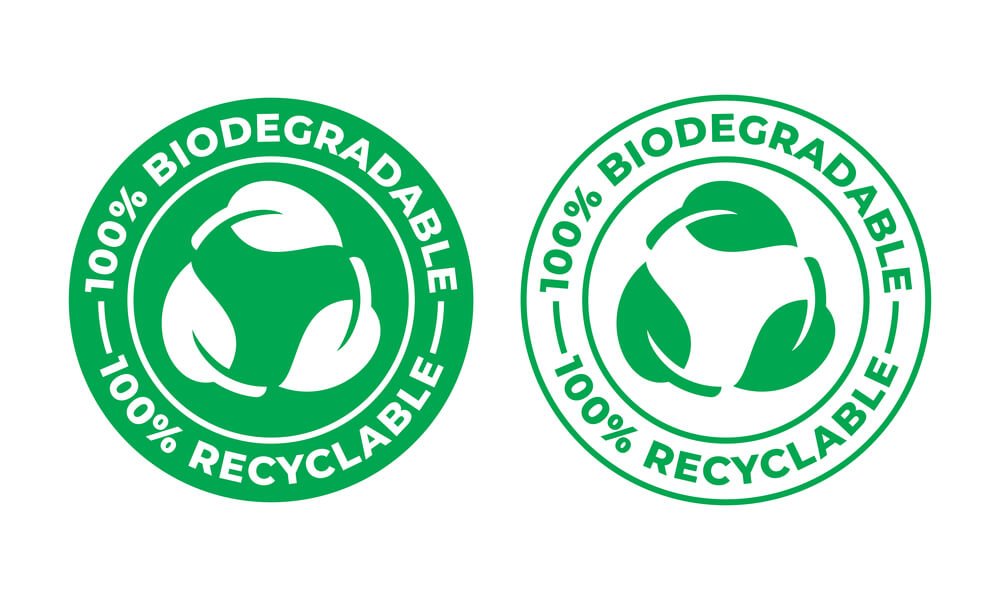We generate a massive amount of solid waste. To be exact, during 2018, the United States generated 292.4 million tons of solid waste.
If you ask me – that’s way too much waste. We can reduce this excess amount of solid waste by using biodegradable substances.
Unlike non-biodegradable solid waste, biodegradable substances decompose in a short amount of time.
When compared to non-biodegradable materials, biodegradable substances are the better choice.
But how do biodegradable substances affect the environment?
What is the Meaning of Biodegradable Waste?
Biodegradable waste is a substance that is decomposed by living organisms.
Bacteria, fungi, and environmental conditions cause the decomposing of the biodegradable waste.
When biodegradable waste decomposes, there are fewer toxins entering the environment.
And some biodegradable waste turns into compost. For instance, food waste becomes compost.
Damaging Effects of Biodegradable Waste
I say, in most circumstances, biodegradable substances are better than non-biodegradable materials.
I recognize the benefits of biodegradable substances. I also know it is important to examine the drawbacks of biodegradable waste.
In large quantities, biodegradable waste can damage the environment and harm human health.
In landfills, these piles are a mixture of solid waste and biodegradable waste.
When in large piles, the biodegradable substances get trapped underneath other debris.
This cuts off the oxygen supply. And that slows down the degradation of biodegradable substances.
To me, the most notable damaging effects of biodegradable waste are –
1. Generates foul odor because of the anaerobic fermentation
2. Breeding grounds for mosquitoes and rats
3. A large amount of microbial flora creates an environmental health hazard
Foul Odor
Biodegradable substances break down through anaerobic fermentation.
This means decomposition happens without oxygen. The anaerobic fermentation process produces a foul-smelling gas.
These gases become air pollution.
Research finds most of these gases are volatile organic compounds (VOC).
Breeding Grounds for Mosquitoes and Rats
Large piles of biodegradable substances attract rats and mosquitoes.
These creatures use landfills as a breeding ground.
Rats and mosquitoes are vectors and carriers of communicable diseases.
This turns large piles of biodegradable substances into health hazard zones.
Large Amounts of Microbial Flora
Fungi and bacteria break down biodegradable substances.
A large amount of microbial flora is hazardous to humans, animals, and plants.
So, biodegradable substances in large piles are harmful to the environment.
Can biodegradable waste be harmful?
Yes, I say biodegradable waste can be harmful to people and the environment.
Biodegradable waste can inadvertently harm people.
Yet, decomposing biodegradable waste creates a toxic environment.
Mosquitoes and rats inhabit the toxic environment around piles of biodegradable waste.
Then, when the rat or mosquitoes interact with humans, they bring harmful diseases.
Biodegradable waste can be harmful to the environment.
This is because some biodegradable materials do not completely decompose.
For instance, oxo-biodegradable plastics break down into microplastics.
These microplastics do not break down further. Instead, they pollute the oceans and our soils.
Biodegradable vs. non-biodegradable
Biodegradable means it can break down by biological means.
Bacteria and fungus help break down biodegradable materials.
Non-biodegradable materials are the opposite. Living organisms cannot break down non-biodegradable materials.
Biodegradable Substances
Biodegradable substances decompose in a short amount of time.
Living organisms, like bacteria and fungus, break down biodegradable materials.
Examples of biodegradable substances are food waste, paper waste, sewage, and manure.
I say the most notable traits of biodegradable substances are –
· Rapid degradation process
· Decomposed by microorganisms
· Biodegradable waste does not accumulate
· Waste turns into biogas or compost
Non-Biodegradable Substances
Substances not broken down by living organisms are non-biodegradable materials.
These substances are divided into two categories: recyclable and non-recyclable waste.
Examples of non-biodegradable substances include plastics, metals, cans, and chemicals.
How Non-Biodegradable Substances Affect the Environment?
Non-biodegradable substances, like plastic, metals, and chemicals are not decomposed by living organisms.
Instead, non-biodegradable substances linger in the environment.
Non-biodegradable substances are pollutants. Non-biodegradable wastes can be harmful to the environment.
· Chemical pesticides
· Plastic waste
· Metals
Chemical pesticides are non-biodegradable substances.
These pesticides accumulate in the soil. Over time, the chemical pesticides change the soil pH level.
This in turn affects the soil’s fertility or ability to grow plants. These chemical pesticides wash into rivers, creating algal blooms.
Once in the food chain, the pesticide compounds with each level.
These pesticides will reach humans over time.
Most plastics are non-biodegradable substances. And most plastics end up in the landfill.
Most of these plastics are recyclable. Once in the landfill, plastics remain for thousands of years.
And oftentimes plastic waste becomes ocean pollution. All and all, non-biodegradable plastic pollutes the environment.
Metals are non-biodegradable substances.
Metals have the potential to be pollution.
But non-biodegradable metal can be recycled instead. Recycling metal keeps the substance out of landfills.
This reduces metal pollution. So, the effects of metal waste on the environment are negated with recycling.


